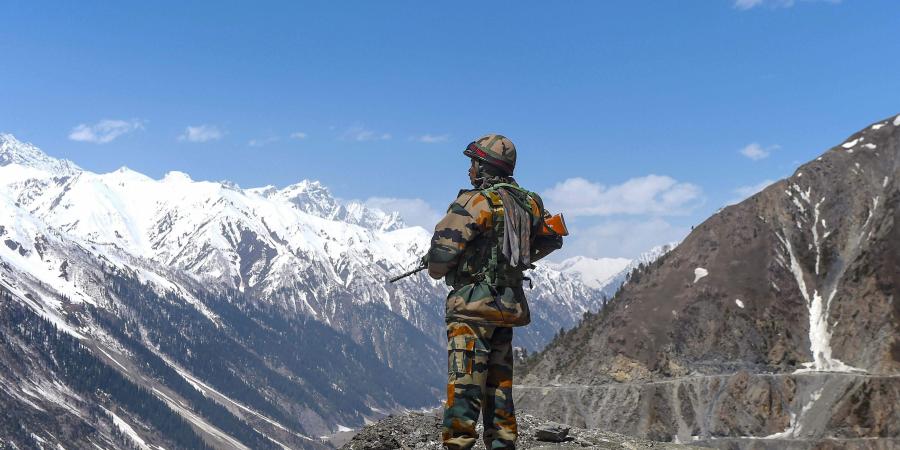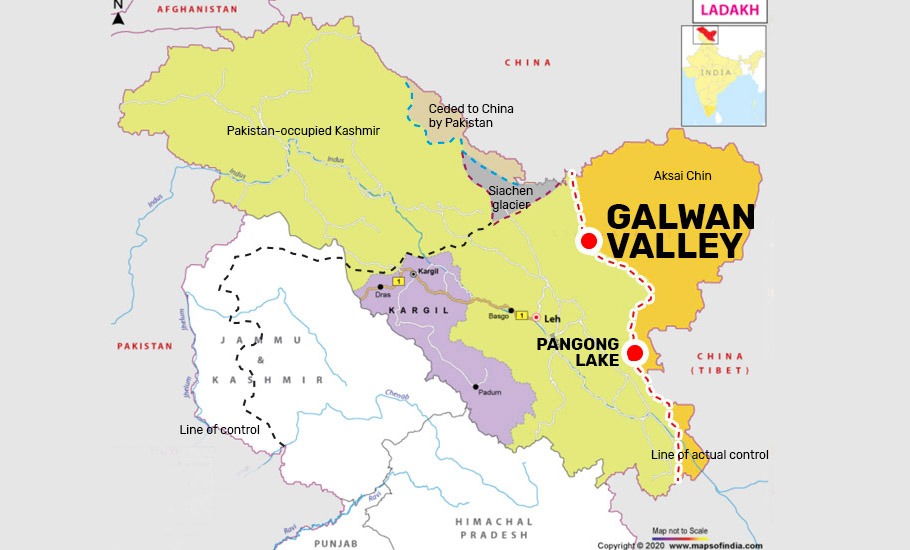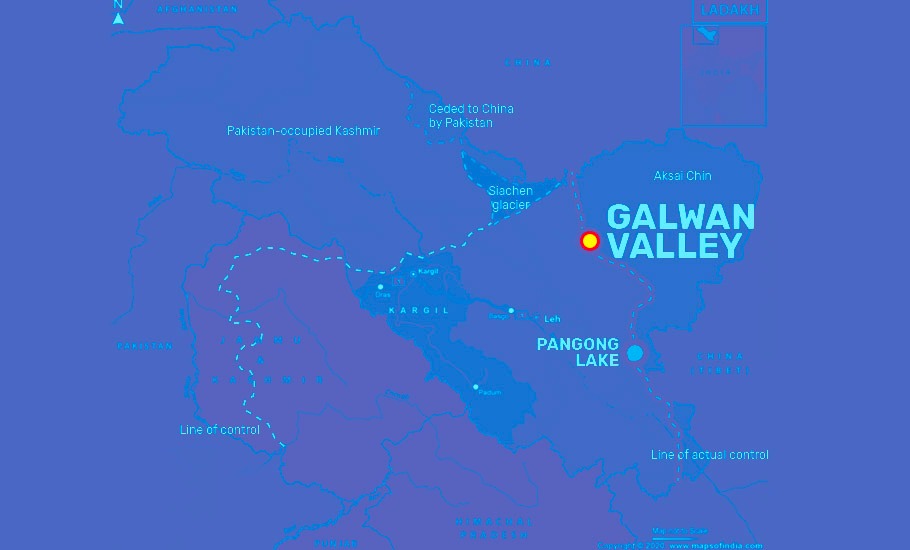
Galwan Valley face-off: Indian, Chinese officials meet to defuse situation

The Indian Army on Tuesday (June 16) said that an officer and two soldiers were killed in Galwan Valley in eastern Ladakh on Monday during the violent face off with the Chinese troops, the first such incident on the India-China border in the last 45 years reflecting massive escalation.
The Army also said there were casualties on both sides during the violent face-off.
However, China alleged that the Indian troops twice crossed the border line on June 15 for “illegal activities and provoked and attacked Chinese personnel” which led to serious physical conflict between the two sides.
The statement came hours after the Indian Army said the violent face-off took place between the troops during the “de-escalation process” in the Galwan Valley.

Meanwhile, there was no immediate confirmation from Beijing on the likely casualties on the Chinese side.
“I am not aware of the information you provided,” Chinese Foreign Ministry spokesman Zhao Lijian said in Beijing when asked about the reports of the Indian casualties at the contested borders.
“Our border troops had a high-level meeting and reached important consensus on easing the border situation but astonishingly on June 15 the Indian troops seriously violated our consensus and twice crossed the border line for illegal activities and provoked and attacked Chinese personnel which led to serious physical conflict between the two sides and China has lodged strong protest and representation with the Indian side,” Zhao said.
Related news: Backstory of Ladakh’s Galwan Valley and the legend of Rassul Galwan
“We once again solemnly ask the Indian side to follow our consensus, strictly regulate its front-line troops and do not cross the line, do not stir up troubles or make unilateral moves that may complicate matters,” the spokesperson said.
Zhao also added that both sides agree to resolve this issue through dialogue and consultation and make efforts for easing the situation and upholding the peace and security along the border area.

From the Indian side, Defence Minister Rajnath Singh briefed Prime Minister Narendra Modi on the situation at the border via video call after a meeting with CDS General Bipin Rawat, the three military chiefs and External Affairs Minister S Jaishankar.
Military sources said the two armies are currently holding Major General-level talks at the site of the clash.
“During the de-escalation process underway in the Galwan Valley, a violent face-off took place on Monday night with casualties. The loss of lives on the Indian side includes an officer and two soldiers,” the Army said in a brief statement.
“Senior military officials of the two sides are currently meeting at the venue to defuse the situation,” it said.
It is learnt that the Army officer killed in the clash was a Colonel and he was commanding a battalion at Galwan.
Related news: India-China stand-off could continue as an assertive China marks time
The sources said the three Army men died due to injuries sustained following stone-pelting and use of rods by the Chinese side.
However, there is no official word on it. The sources also said that no firearms were used during the clash.
Army Chief Gen MM Naravane cancelled a scheduled visit to Pathankot in view of the incident in eastern Ladakh.
According to a senior military officer in New Delhi, it is the first incident involving the casualty of an Indian soldier in a violent clash with the Chinese Army after 1975 when four Indian soldiers were killed in an ambush at Tulung La in Arunachal Pradesh along the de-facto border between the two countries.
Official sources said there was no firing between the two sides.
The incident comes days after Indian Army chief Gen MM Naravane said both sides have begun “disengaging” from the Galwan Valley.
Related news: India, China’s choreographed disputes on border seem risky, but safe
BJP MP Rajeev Chandrasekhar on Tuesday came out strongly against the death of army officers. In a series of tweets, he appealed to people to support the armed forces.
Chandrasekhar, who is a former member of the Parliamentary Standing Committee on Defence, hit out at China and the Communist Party of China (CCP) over the incident.
The BJP Rajya Sabha member called upon people to “get behind the men and women in our armed forces and support them strongly, unitedly and patiently.”
He also appealed to the people not to let politics or any other thing dilute Indian unity against China.
“I want to tell the CCP side – India has never clashed with any nation – but when violence is forced on it, it will respond fittingly and unitedly,” he tweeted.
Related news: Army officer, 2 jawans killed at Galwan valley in face-off with Chinese forces
Following the standoff in eastern Ladakh, the two sides have deployed additional troops along the LAC, the de-facto Sino-India border, in North Sikkim, Himachal Pradesh, Uttarakhand and Arunachal Pradesh in the last few days, the sources said.
After the standoff began early last month, the Indian military leadership decided that Indian troops will adopt a firm approach in dealing with the aggressive posturing by the Chinese troops in all disputed areas of Pangong Tso, Galwan Valley, Demchok and Daulat Beg Oldie.
The Chinese Army has been gradually ramping up its strategic reserves in its rear bases near the LAC by rushing in artillery guns, infantry combat vehicles and heavy military equipment.
The trigger for the face-off was China’s stiff opposition to India laying a key road in the Finger area around the Pangong Tso Lake besides construction of another road connecting the Darbuk-Shayok-Daulat Beg Oldie road in Galwan Valley.
The road in the Finger area in Pangong Tso is considered crucial for India to carry out patrol.
India has already decided not to stall any border infrastructure projects in eastern Ladakh in view of Chinese protests.
The situation in the area deteriorated after around 250 Chinese and Indian soldiers were engaged in a violent face-off on May 5 and 6. The incident in Pangong Tso was followed by a similar incident in north Sikkim on May 9.
The India-China border dispute covers the 3,488-km-long LAC. China claims Arunachal Pradesh as part of southern Tibet, while India contests it. Both sides have been asserting that pending the final resolution of the boundary issue, it is necessary to maintain peace and tranquillity in the border areas.


